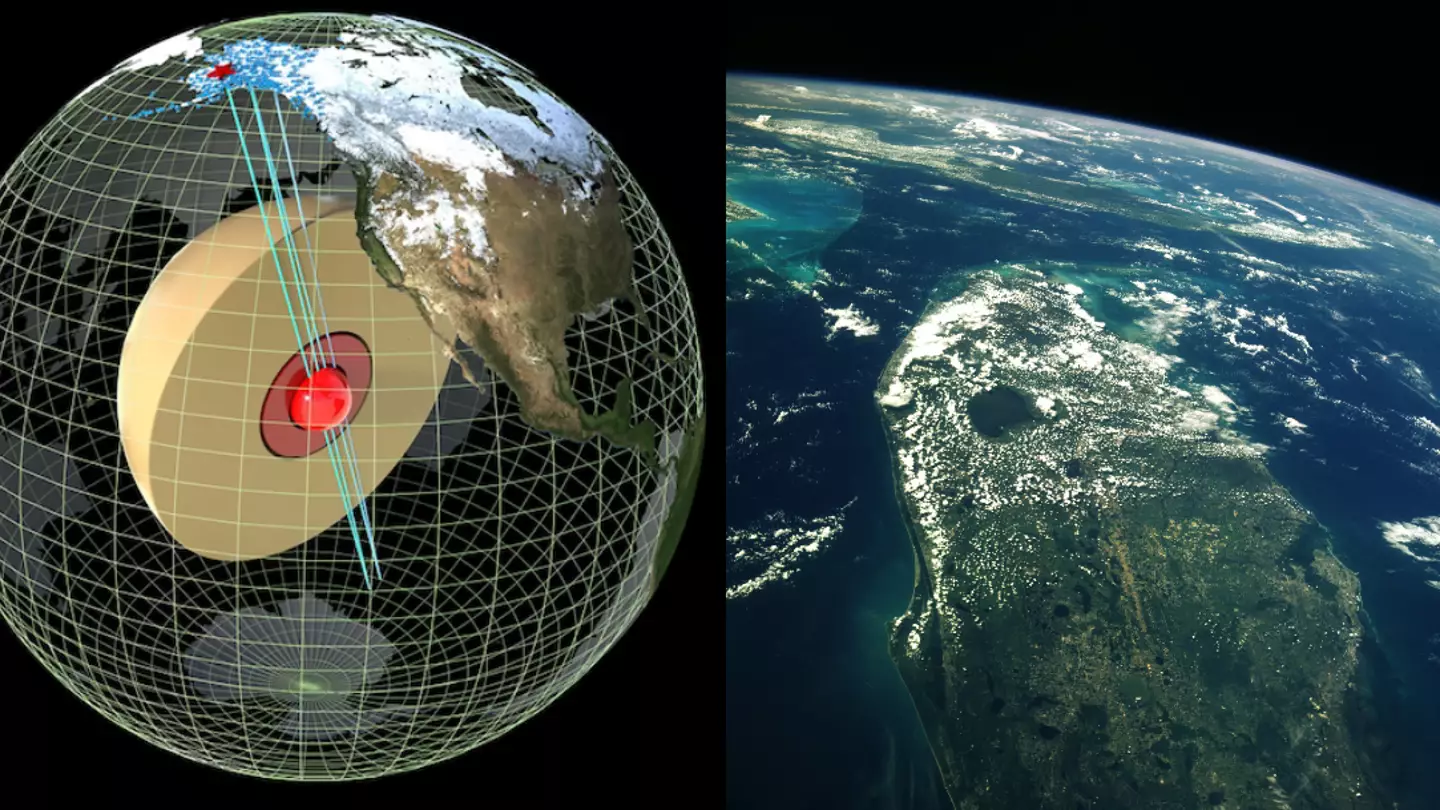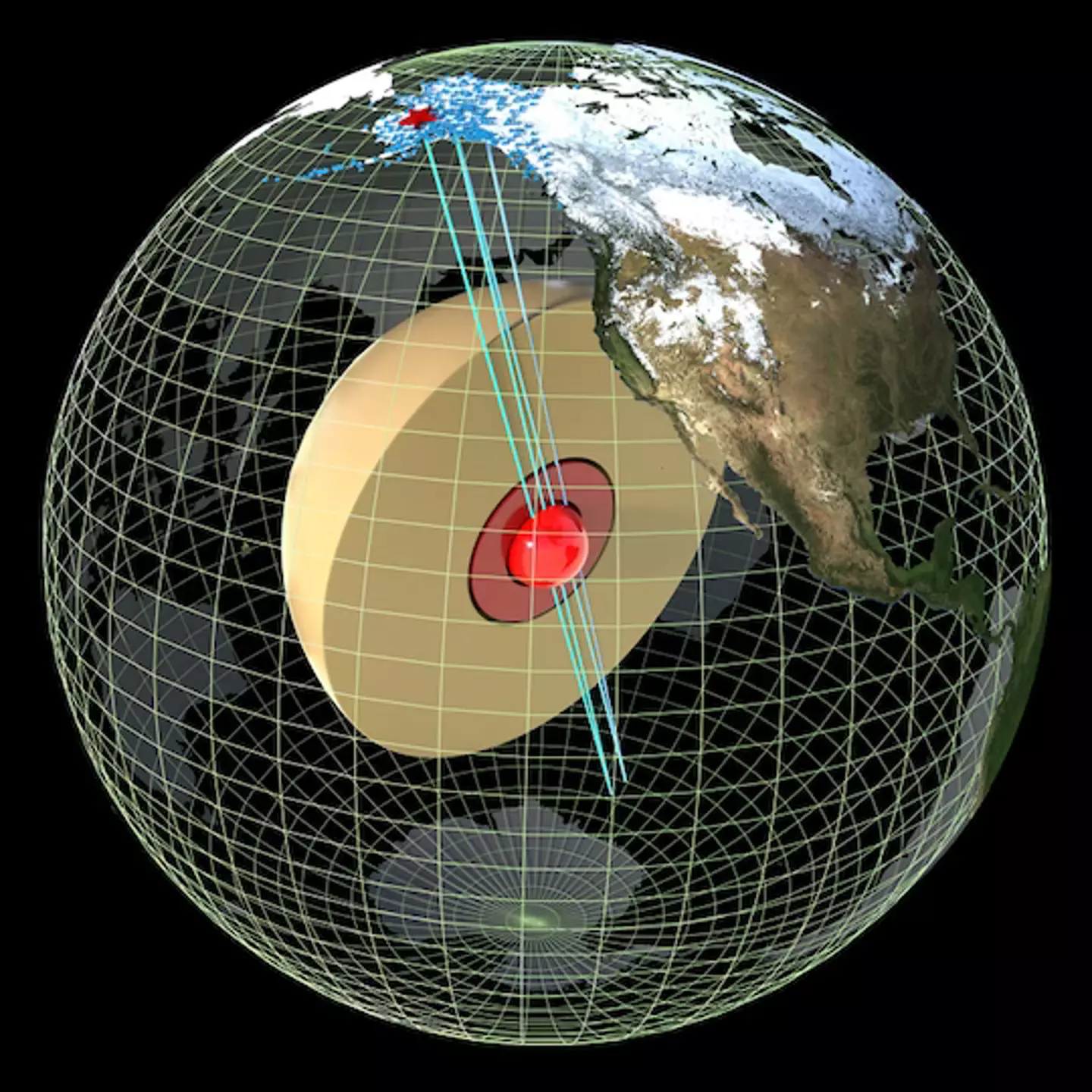
Gone are the days of thinking the Earth had just the four layers made up of a crust, mantle, liquid outer core and solid inner core.
That's the beauty of science; even when you think you know all there is to on a subject, something new happens that throws everything out of the window.
Two scientists in Australia are the latest to cause a headache of the academic kind through their startling new discovery: a massive metal ball in the centre of the earth.
Advert
The seismologists from Australian National University have released what they say is evidence of a huge solid metallic ball in the middle of the planet. And by huge, we mean huge. A whopping 400 miles thick.
Thanh-Son Phạm and Hrvoje Tkalčić, the pair behind the work, say the metal object can be found within the inner core and is iron-nickel in composition, with the duo labelling it the 'innermost inner core'.
It was found through studying earthquakes and measure their seismic waves as they reverberated through the entire planet, which sounds pretty surreal to begin with.

The shockwaves are measured by the time they take to travel through the Earth, with every layer of the planet having a different density.
Advert
There is a belief that the innermost inner core could actually be different in its properties when it comes to the inner and outer core.
Pham told the Washington Post: "Clearly, the innermost inner core has something different from the outer layer.
"We think that the way the atoms are [packed] in these two regions are slightly different."
He added: "The breakthrough in this study is that we find a new way to sample the very centre of the Earth’s inner core."
Advert
The inner core is studied by scientists because of how important it is to life itself on Earth, providing the planet with a magnetic field that protects life itself from harmful radiation in outer space.
"Understanding the evolutionary history of our planet’s inner core and its connection with the geomagnetic field is relevant to understanding the timeline of life’s evolution on Earth’s surface," the pair write in The Conversation.

"The potential difference between the innermost metallic ball and the outer shell of the inner core is not in its chemical composition, like with some other Earth layers.
Advert
"Both are likely made of an iron-nickel alloy with small amounts of lighter chemical elements.
"Additionally, the transition from the innermost (solid) ball to the outer shell of the inner core (also solid) seems gradual rather than sharp. That is why we can’t observe it via direct reflections of seismic waves from it.
"This differs from previous studies documenting sharp boundaries between the other layers inside Earth – from crust to mantle, for example."
Featured Image Credit: Drew Whitehouse, Son Phạm and Hrvoje Tkalčic / Getty Stock ImagesTopics: Space, World News, Science, Technology, Education, Australia, NASA